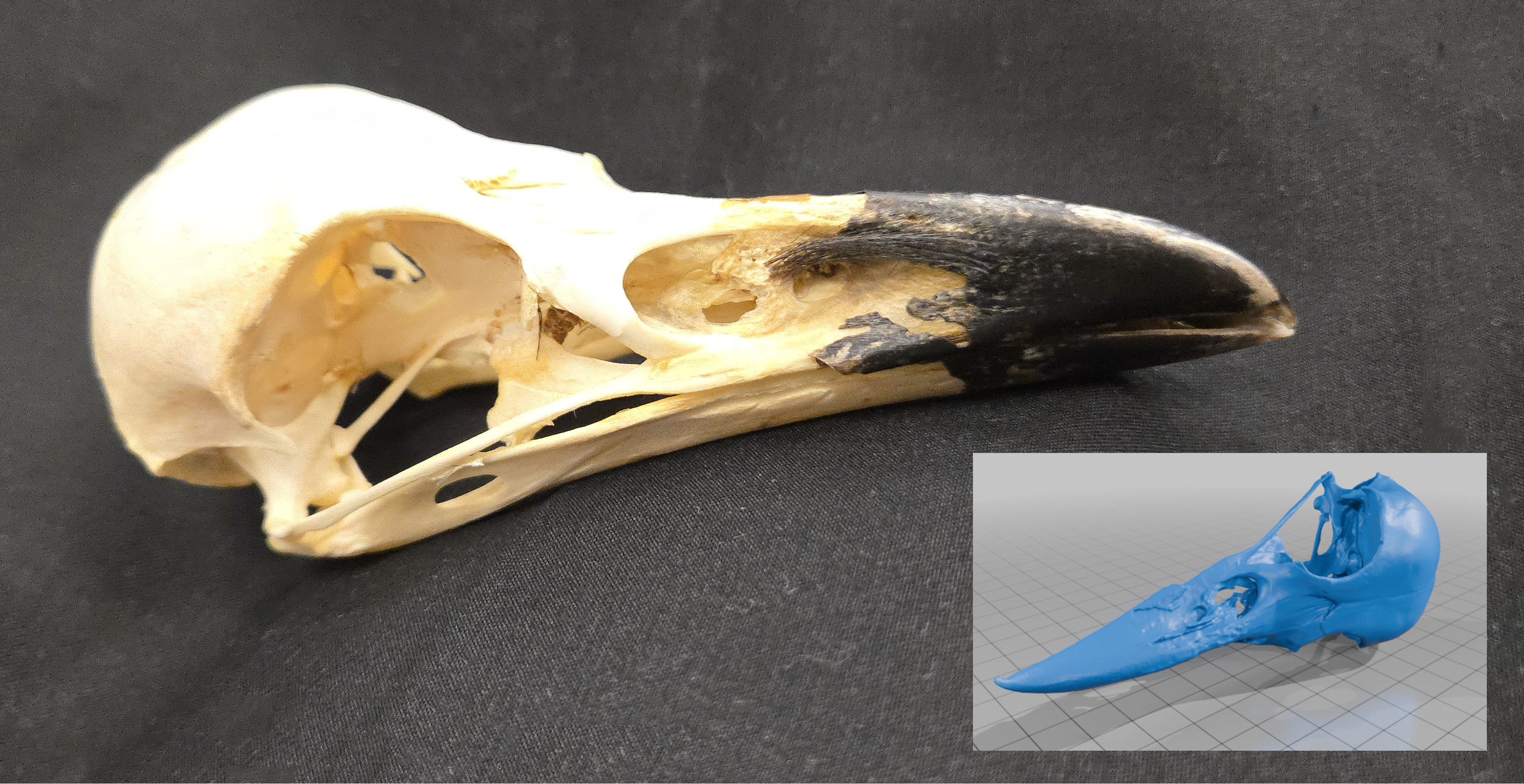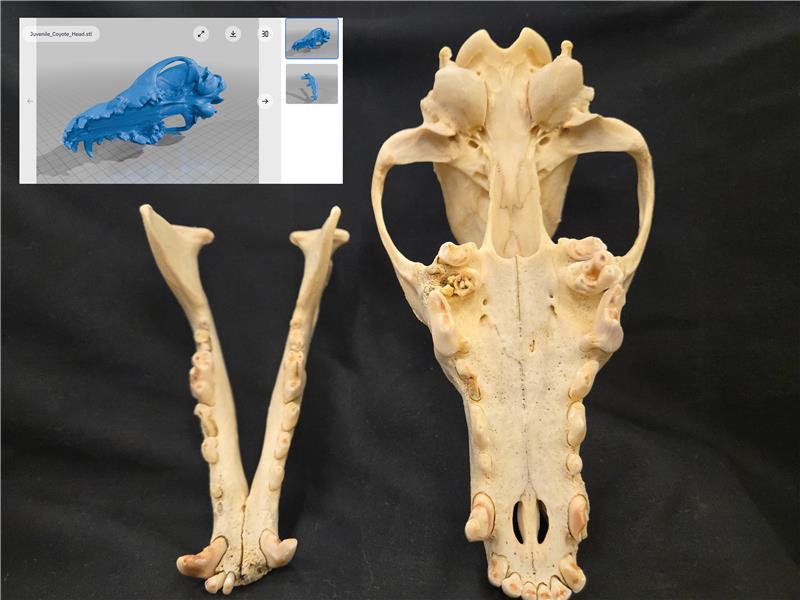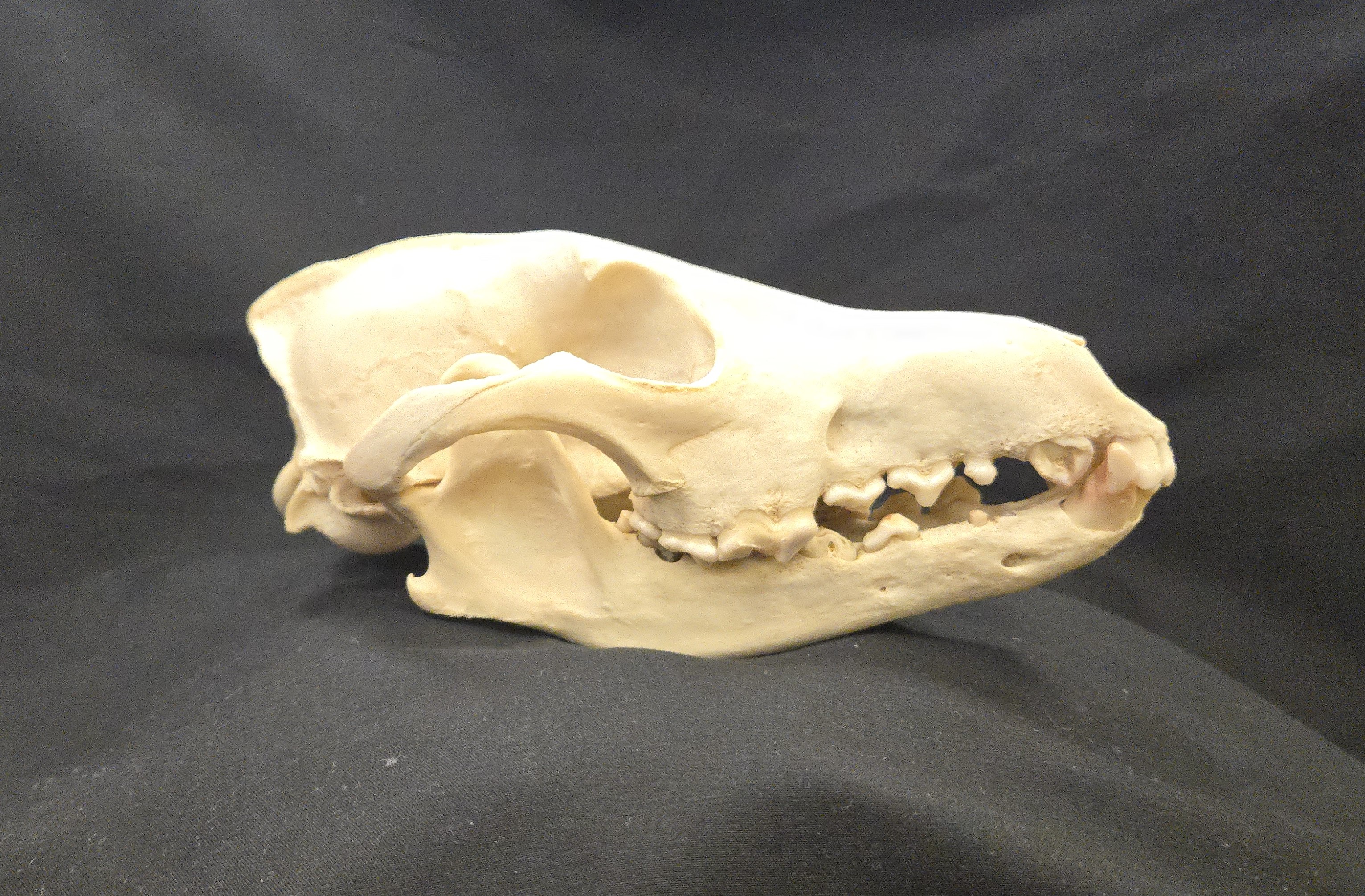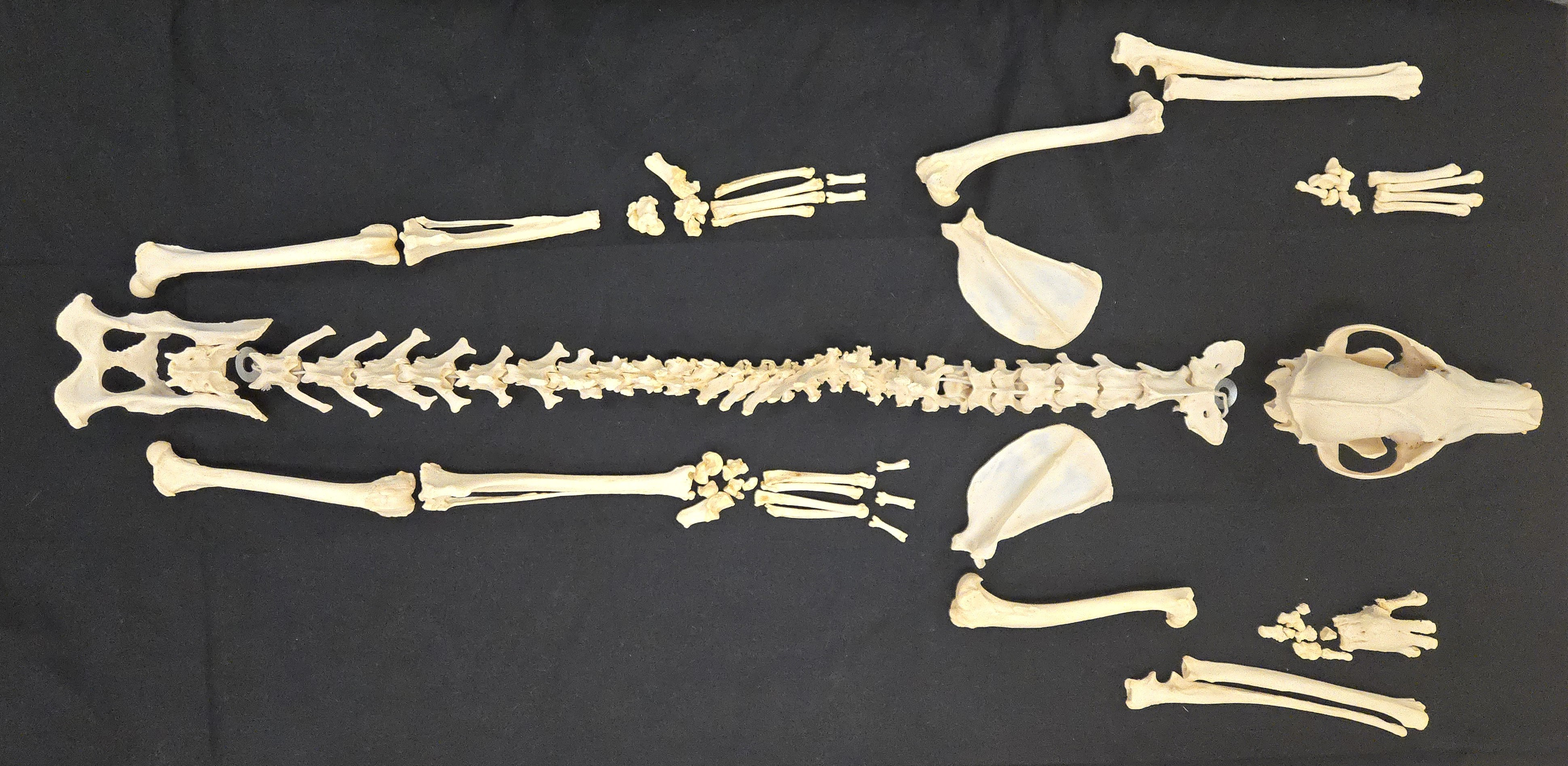Gnarly Bones: The 3D Bone Scanning Project
April 2025 - Written by Martina King, ChatGPT condensed the original article.

Gillian Halliday holds a 3D replica of "Clint" the Coyote's skull. Credit: Abigail Graham
From Bone Talks to Cutting-Edge Tech
Gillian Halliday, a fourth-year biology student, started by bringing real animal bones to schools for educational "bone talks." But there were challenges—some bones were too fragile, rare, or required permits. Halliday knew the Makerspace had a 3D scanner and that’s what gave her a game-changing idea: why not 3D scan the bones and print replicas for outreach? With the support of lab technician Dana Sanderson and the Makerspace staff, she dove into the project and mastered the 3D scanner.

Raven skull (3D model inset). Credit: Gillian Halliday
Becoming a 3D Scanning Pro
Halliday quickly became the go-to expert on 3D scanning. She started with a juvenile coyote skull with rare double canines, then moved on to a lynx and a raven skull. She uploaded the files to MacEwan Biology’s Thingiverse account MacEwanBiology, ensuring free access for anyone to print them. Her anatomically accurate raven skull helps counter the misinformation and low-quality models flooding the internet. Now, she works in the Makerspace tutoring others in 3D scanning and printing.

Coyote skull (3D model inset). Credit: Gillian Halliday
Enhancing Learning & Global Research
Halliday’s work isn’t just for public education—it’s revolutionizing how students learn at MacEwan. Some rare species aren’t available in the university’s bone collection, making them difficult to study. By collaborating with museums and academics worldwide, she’s 3D printing bones for class and public use that were once inaccessible. New specimens include the skull and forlimb of Tiktaalik, a now-extinct fish significant to evolution, from the Canadian Museum of Natural History.

Coyote skull. Credit: Gillian Halliday
One of the most exciting projects? A full 3D-printed velociraptor skeleton for display in the biology collection! Halliday arranged to get the files from Belgian 3D sculptor and modeller Inhuman-Species. She’s also working on getting the files for a model of Alberta’s only native lizard, the greater short-horned lizard, from the University of Texas, to be used in MacEwan labs.
Even Alberta Fish and Wildlife officials are on board—they’ve asked Halliday to scan and print a black bear and cougar skull for education and forensic use. Meanwhile, she’s also tackling scanning a one-of-a-kind Wile E Coyote type specimen: "Clint," an urban coyote who survived multiple injuries, which likely included encounters with cars, over eight years. His “gnarly” skeleton, as Halliday describes it, is invaluable for studying how wild animals adapt and recover. By 3D scanning Clint’s remains, Halliday explains that the printed bones can be mounted to demonstrate how they fit together, and where they notably don’t. This ensures this remarkable specimen is both protected and widely accessible for research and learning.

Coyote skeleton. Credit: Gillian Halliday
The Future of 3D Bones
Halliday’s project is connecting MacEwan to the international scientific community. Where researchers once travelled globally to study rare bones, 3D scanning now allows them to analyze specimens remotely, reducing costs and environmental impact.
Determined to keep the project alive, Halliday is training a first-year student to take over before she graduates this spring. She wants current students to know that sometimes just knowing what is available from the Makerspace can lead to great ideas and learning that opens doors.
As for her own future? She’s applying to the U of A Paleontology program, where her tech skills give her a major advantage. Her dream is to study Alberta’s prehistoric past while collaborating ethically with Indigenous communities.
From coyote skulls to velociraptors, Halliday’s 3D bone project is making waves in education, research, and conservation—ensuring the study of bones is more accessible, sustainable, and, frankly, gnarly.
